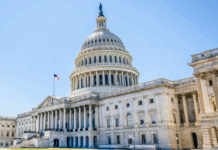 The 114th U.S. Congress adjourned last week concluding a brief lame duck session that included the passage of the 21st Century Cures Act and a short-term funding bill that will keep the government running through April 28.
The 114th U.S. Congress adjourned last week concluding a brief lame duck session that included the passage of the 21st Century Cures Act and a short-term funding bill that will keep the government running through April 28.
Republican congressional leaders plan to move quickly in early January to start repealing the Affordable Care Act (ACA). The first step would be approving a resolution that directs House and Senate committees to use the budget reconciliation process to repeal budget-related parts of the ACA.
As a reminder, reconciliation requires only 51 votes in the Senate to pass. However, only tax and spend provisions can be considered. For example, reconciliation cannot be used to repeal the delivery system reforms or the ban on blocking coverage due to preexisting conditions, lifetime caps and granting coverage for kids up to age 26. Overall, a replacement of the ACA cannot be moved through reconciliation.
A top priority for SDAHO is to ensure the number of South Dakota’s covered by some insurance plan doesn’t diminish and that simultaneous action on “replace and repeal” is preferred to an isolated repeal or “repeal and delay” strategy.
We are sharing an important message with the South Dakota congressional delegation that “if Congress approves a repeal, the Medicare and Medicaid original cuts in the ACA should be restored to hospitals.”
It appears that House Speaker Paul Ryan’s (R-Wisconsin) “A Better Way” platform is still being viewed as a starting point for any potential replacement plan. A handful of key lawmakers are working over the holidays to identify their next steps.
Also, the AHA issued a report last week that found that if the ACA is repealed without a bill providing simultaneous coverage to accompany it, the net impact on hospitals would be reductions of $165.8 billion between 2018 and 2026, assuming Congress restores Medicaid disproportionate share hospital cuts. If the ACA Medicare reductions are maintained, hospitals will suffer additional losses of nearly $290 billion.






